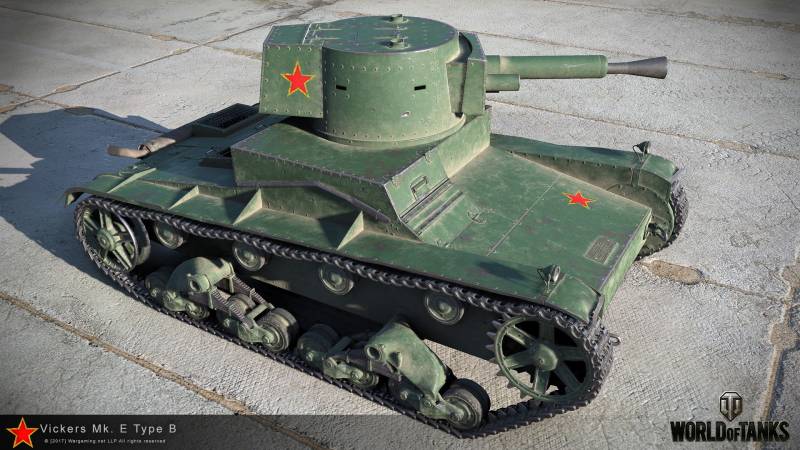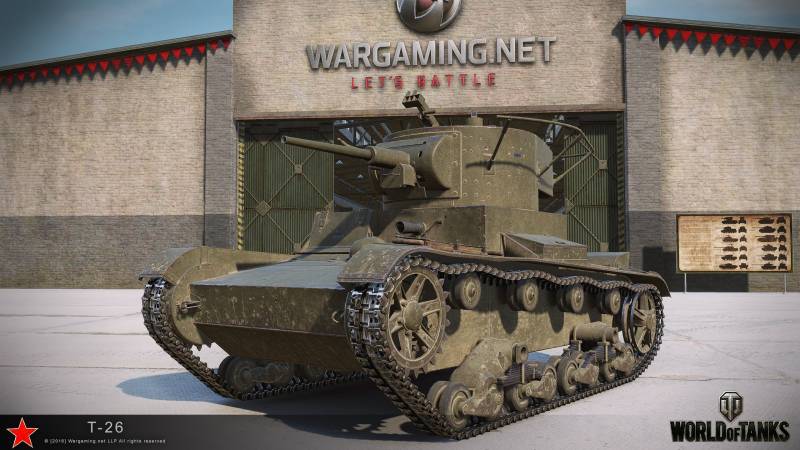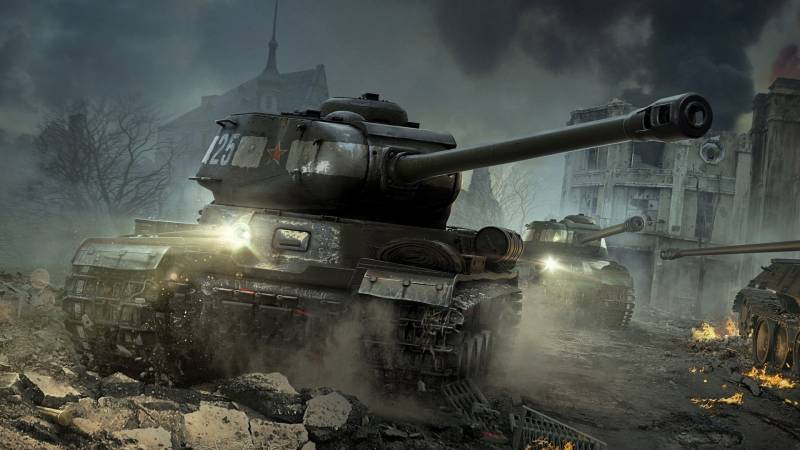Main caliber: how the armament of tanks changed
At that time, the calibers of guns of various combat vehicles were not too large. One of the most popular tanks In the 1930s, the Vickers Mk E Type B was armed with a short-barreled 47mm cannon. Not the most impressive weapon, but it was enough to destroy a dugout or a machine-gun nest. And then the tanks had no other targets.
The understanding that a gun is needed not only to fight the infantry came shortly before the end of the First World War during the first stories tank battle. Three British Mark IVs fought three German A7Vs. The machine guns turned out to be useless against the machines of Germany, and therefore, after the battle, the British converted several "females", installing one cannon on them. At that time, tank battles were rare, so further modernization did not advance. The British continued to design machine-gun tanks until the mid-1930s. Among the main requirements for this weapon was the ability to fire for a long time, the ability to remove the machine gun from the car, as well as a large ammunition load. Throughout the world, until the end of the 1930s, they continued to design and build exclusively machine-gun tanks, but their scope over time began to be limited only to reconnaissance.
Most of the Soviet armored vehicles before the start of World War II were armed with a DT-29 machine gun. He possessed a 60-round disk magazine, which had to be changed frequently. After some time, a folding metal butt was developed for the DT-29. The machine gun could be installed on the tank both in a pair with a gun and in a ball mount, and if necessary, it could be removed.
Over time, the designers of the USSR came up with the idea of multi-turret tanks. For example, the T-26 two-turret is a copy of the 6-ton Vickers, the T-28 is a modified version of the 16-ton Vickers, and the T-35 with five turrets was developed looking at the British Independent. This Soviet vehicle had three cannons (a 76 mm short barreled and two 45 mm guns) and six machine guns. In theory, it was supposed to "make hell on the front line of the enemy's defense", but despite this it was not mass-produced. The T-35 was quite expensive to manufacture, and after the appearance of anti-tank artillery, it was completely abandoned. However, the experiments did not end there. One of the designers' ideas was to put 250-kg rockets on light BT tanks to fight enemy pillboxes. There were also radio-controlled tanks, which were even used in battle.
The machines with flamethrowers lasted the longest in the series. They began to be developed back in 1916, but neither the Germans nor the Americans did anything in the series. In the early 1930s, Soviet engineers took up fire-breathing technology and became leaders in both quality and quantity. Although flamethrower tanks were not produced in large numbers, they were used throughout the Second World War. When used correctly, this weapon easily hacked into enemy defenses. The last flamethrower tank in the USSR was created in the late 1950s. It was Object 483. It failed the test.
Many of the designers' ideas remained on paper due to the appearance of anti-tank artillery. She was so effective at destroying tanks that all tank building schools immediately began to increase their armor. In addition, the Second World War showed that the dictum "tanks do not fight with tanks" is no longer true. To penetrate heavy combat vehicles and disable anti-tank guns, more powerful high-explosive fragmentation shells were needed. The caliber of tank guns began to grow naturally. That is why 1 mm cannons were installed on the Soviet KV-34 and T-76. Meanwhile, the Germans decided to re-equip their Pz.Kpfw. III, colliding in France with the Char B1 bis, as well as the British Matilds. The 37 mm guns were replaced by 50 mm, which also increased the power of the HE shell.
During World War II, tanks became the military's versatile weapon. They broke through the front line, acted on communications and in the rear and proved to be the best anti-tank weapon. When developing guns, great emphasis was placed on the initial velocity of the projectile in order to increase armor penetration. At the same time, sub-caliber and cumulative ammunition appeared. Despite this, land mines, which occupied most of the ammunition, were still best suited to combat infantry and fortifications.
Until 1943, the calibers of Soviet combat vehicles were from 20 to 76 mm. However, after the troops of the Red Army captured the new German "Tiger", it became clear that this was not enough. On the basis of the U-12 cannon, a weapon under the designation D-5T-85 was developed and adopted. In the summer of 1943, it was installed on the SU-85 self-propelled gun, and then used on the first production T-34-85.
At the beginning of the Great Patriotic War, the newest Soviet tanks T-34 and KV-1 had more powerful guns than their German opponents. Later, this advantage was lost, but in 1944 the USSR took revenge by rolling out the IS-2 heavy tank, armed with a 122-mm D-25T gun, which was a shortened barrel of the A-19 corps gun. Of all the tank guns of the Second World War, which were produced in large series, this became one of the most formidable. Tanks IS-2 could fight not only with enemy equipment, but also with fortifications. These machines were combined into breakthrough regiments and significantly strengthened the Soviet units.
Nowadays, tanks are still equipped with machine guns, including large-caliber ones. However, the main innovation is the appearance of smooth-bore guns. They significantly increase the speed of APCR shells. In addition, these cannons can be fired with guided anti-tank missiles.
Now one of the main ways to improve artillery systems is the development of ammunition. Compared to implements, they are simpler and cheaper. Some predict a slight increase in caliber, while others believe that the potential of classic guns has already been exhausted. This means that something new is needed.
For more details on the weapons of combat vehicles, see the video from Wargaming.



Information